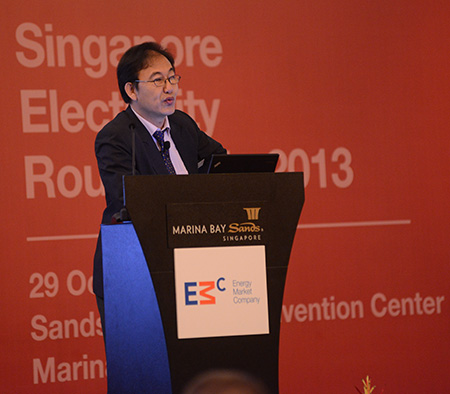
Mr Paul Poh, Senior Vice President, Energy Market Company
The liberalisation of Singapore’s national electricity market has led to better efficiency in power generation and today, efficient generation plants provide for more than 90% of the country’s electricity needs, said Mr Paul Poh, Senior Vice-president of the Energy Market Company.
Speaking at the Singapore Electricity Roundtable, Mr Poh added that the liberalisation efforts were also well-received as the government was able to divest its three biggest generators despite the global crisis in 2008. This signified that Singapore’s National Electricity Market was attractive to foreign investors.
The Singapore Electricity Roundtable is an international forum on electricity and energy and this edition focuses on the evolution of the Singapore’s electricity sector. Singapore’s National Electricity Market celebrates its 10th anniversary this year.
It was important for the National Electricity Market Singapore (NEMS) to continue to improve and evolve, he said, and added that these rule change processes needed to be underpinned by transparency, industry participation and advisors who have good knowledge of reform and no vested interest.
Another essential factor to the continued success of NEMS is investments in new plants and repowering existing ones for better efficiency to meet increased demand. In 2013, the total capacity from installed plants will sufficiently cover the peak forecasted demand, he said.
However, challenges lie ahead. One of them would be tackling climate change issues. Mr Poh commented:“It Is a matter of time that we will need to deal with climate change issues and dealing with such issues will mean dealing with carbon emission issues which means increased costs for the power sector”.
Currently, there is also little use of renewable energy in Singapore but it could increase significantly due to a combination of high carbon prices and taxes, high renewable energy targets, high oil and gas prices or significantly lower costs or renewables with improved technology.
He noted that as renewable energy is highly variable in nature, its inclusion to the energy mix has led to reliability issues in other countries. Thus, there is a need for more spare capacity in order to back up the intermittent supply of electricity. However, costs will increase.
Moreover, subsides are offered for the production of renewable energy and consequently it would be offered at lower prices but as Mr Poh noted: “This would potentially depress average prices and reduce the incentive for firm energy capacity investment”.
The industry may need to focus on pricing structures in order to reduce peak demand, he said, and reiterated: “With challenges and opportunities ahead, it is essential that market and policies remain transparent and credible”.
BY : Cheong Cui Wen, EMA